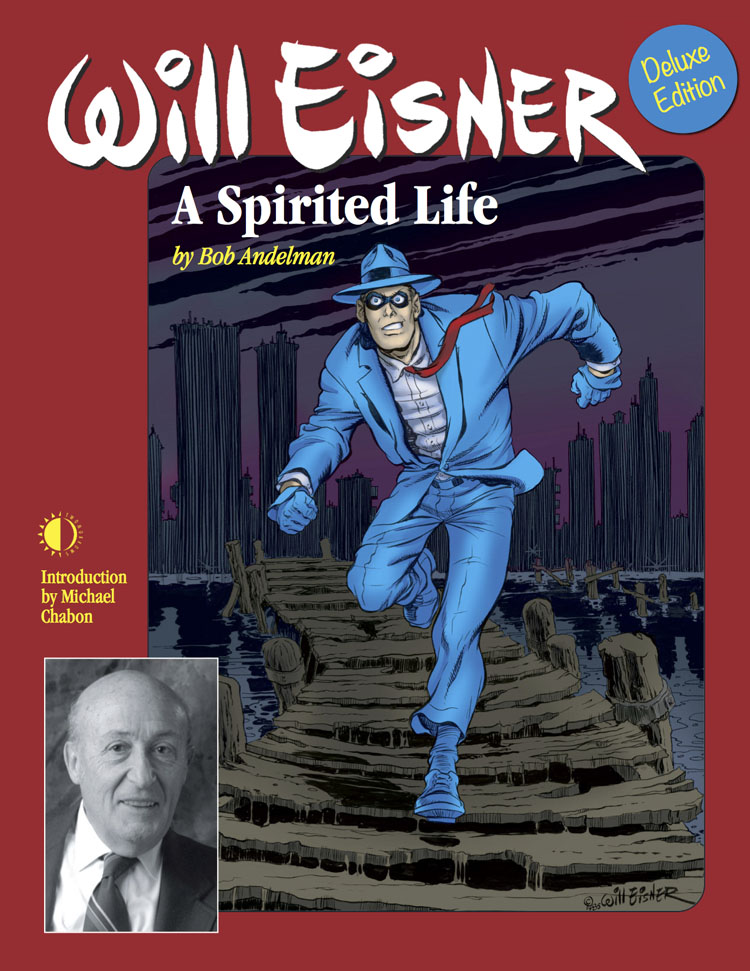 Image by guiltysin via Flickr
Image by guiltysin via Flickr
For every movie that makes it to the screen, there are a thousand projects that fall to the wayside. Later this month, “The Spirit,” finally, hits theaters after plenty of failed attempts. Steven Paul Leiva was a key figure in one of those failed attempts and in this guest essay for Hero Complex he talks about the film that could have been. This photo below shows Leiva, Brad Bird and the late Will Eisner at the comics icon’s White Plains, N.Y., home in 1981.
Frank Miller’s film version of Will Eisner’s innovative 1940s comic book, “The Spirit” opens on Christmas Day. It will be stylistic and hyper-visual, a hoped-for perfect melding of film and “sequential art,” a term coined by Eisner. What it will not be, however, is revolutionary. Comic book movies are now the meat and potatoes — not to mention several side vegetables — of Hollywood. And even its green screen, scene-simulation style is just part of a Miller continuum that started with “Sin City.”
But if the world had turned a little differently, if fate had been a little kinder, a “Spirit” feature film would have debuted in the 1980s that would not only have been revolutionary but — those of us involved in it were convinced — a huge hit, possibly the first $100 million-grossing animated feature. And the futures of such filmmakers as Brad Bird, Gary Kurtz, John Musker and John Lasseter might have taken alternative paths.
In 1980, I was a freelance publicist specializing in animators I admired. My clients included Chuck Jones, Bill Melendez and Richard Williams. However, I was not particularly happy with the state of animation itself. Previously I had been executive secretary of the animation society ASIFA-Hollywood and an animation programmer for the Los Angeles International Film Exposition (FILMEX), and so had been exposed to a lot of great, classic American animation and exciting foreign animation. I had become frustrated that animation in Hollywood had fallen into the doldrums of sub-standard Disney, awful Saturday morning TV cartoons, and too-cute-to-stomach exploitations of brightly colored bears and other sugarcoated creatures. And I had become tired of anthropomorphic animals as the dominant fauna of American animation. Not that there was anything intrinsically wrong with them, it’s just that I was a Homo sapiens chauvinist and felt that American animation as an art form would never mature (as Japanese and European animation had) until it learned to tell human stories directly, and not through the filter of talking animals.

![]()
Get MR. MEDIA Interviews delivered by email! Enter your email address:
Delivered by FeedBurner
TV Stars * TV Producers * Movie Stars * Movie Directors, Producers, documentary Filmmakers and Screenwriters * Politicians and Political Writers * Stand-Up Comedians * Health Experts * Magazine Editors * Radio Stars * Bloggers, Podcasters and Web Producers * Novelists * Musicians and Music Journalists * Sexuality Experts * Culture and Society Experts * Food Experts * Biographers, Historians and A.J. Jacobs * Athletes and Sports Experts * Photographers * Journalists * Crime Experts * CEOs and Business Experts * Comic Book Creators * Cartoonists * Will Eisner Co-Workers, Friends and Experts

![Reblog this post [with Zemanta]](http://img.zemanta.com/reblog_e.png?x-id=6b733fd7-03ca-4b54-a606-a53e3d7ab4a5)
